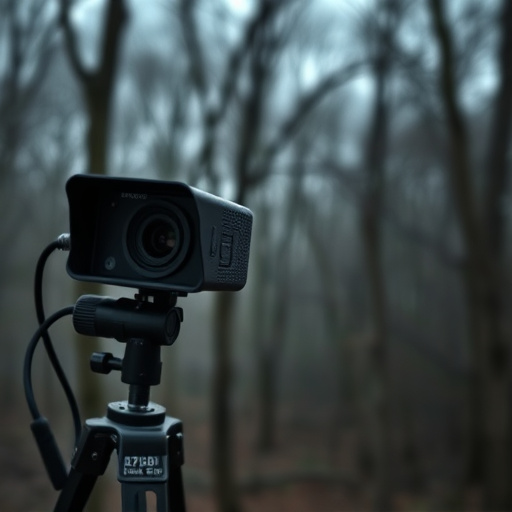"This guide emphasizes the need for renters' privacy and introduces discrete security cameras as a solution. These camera devices, disguised as everyday items like smoke detectors, offer peace of mind without compromising aesthetics. To ensure effectiveness, strategic placement is key. With advanced technology, renters can now scan for hidden signals using specialized equipment. Balancing security and privacy is essential; landlords must adhere to legal guidelines regarding camera installation, especially in private areas, to maintain ethical practices while employing Discrete Security Cameras for Renters."
Unaware of hidden monitoring devices can leave renters vulnerable. This comprehensive guide equips you with essential knowledge to identify discrete security cameras, often imperceptibly placed by landlords or property managers. Learn visual cues and strategic placement tactics to uncover these surveillance devices. Explore advanced techniques for detecting wireless signals and understand your legal rights and privacy protections as a tenant. Empower yourself with these tips to navigate your living space with enhanced awareness.
- Understanding Hidden Monitoring Devices: A Renter's Guide
- Detecting Discrete Security Cameras: Visual Cues and Placement
- Advanced Techniques for Uncovering Wireless Signals
- Legal Considerations and Privacy Rights for Tenants
Understanding Hidden Monitoring Devices: A Renter's Guide
Understanding Hidden Monitoring Devices: A Renter’s Guide
As a renter, privacy is a valuable right and concern. With advancements in technology, hidden monitoring devices have become more accessible and subtle, raising awareness among individuals seeking to protect their personal spaces. Discrete security cameras for renters offer a solution without compromising on peace of mind. These devices are designed to blend seamlessly into the environment, often resembling everyday objects like smoke detectors or light switches.
Rents can use these hidden cameras to safeguard their homes from potential intruders or ensure the safety of their belongings. The key to successful implementation lies in strategic placement and discreteness. By positioning the cameras in less obvious areas, renters can maintain an air of normalcy while still gaining valuable footage for security purposes.
Detecting Discrete Security Cameras: Visual Cues and Placement
Detecting discrete security cameras, often hidden from plain sight, is a key skill for renters looking to ensure their privacy. Visual cues can be subtle but revealing; pay close attention to any unusual markings or uneven surfaces on walls or ceilings, as these could indicate the presence of a camera. The placement of devices is also crucial—look for spots that offer optimal views without drawing too much attention, such as corners or high shelves.
Renter-friendly discrete security cameras are designed to blend seamlessly into the environment, making them less noticeable. When renting, inquire about the security system and its components; understanding where cameras are located can help you take proactive measures to protect your privacy. Regularly checking for any new or unexpected devices is an essential part of maintaining control over your living space.
Advanced Techniques for Uncovering Wireless Signals
In today’s digital era, the world of hidden monitoring device signal detection has evolved significantly. Advanced techniques now allow for more discreet and effective methods to uncover wireless signals, especially for renters considering discrete security cameras. One such technique involves utilizing specialized equipment that can detect and analyze radio frequency (RF) emissions, enabling users to pinpoint the source of a signal even if it’s hidden within a complex network of devices.
By employing these advanced tools, renters can ensure they’re not being monitored illegally. It’s crucial to understand that many everyday items emit RF signals, making detection challenging. However, with expertise and the right equipment, one can differentiate between legitimate signals and potential hidden monitoring devices. This process involves scanning various frequency bands, analyzing signal strengths, and looking for patterns that might suggest a malicious intent or unauthorized surveillance setup.
Legal Considerations and Privacy Rights for Tenants
When it comes to hidden monitoring device signal detection, it’s crucial to navigate a delicate balance between security and privacy, especially in rental properties. Tenants have legal rights and expectations regarding their personal space, and landlords or property managers must adhere to these regulations when installing any surveillance equipment. The use of discrete security cameras for renters is a popular choice for enhancing safety, but it should be done ethically and with transparency.
In many jurisdictions, landlords are required to inform tenants about the presence of security cameras and the areas they cover. This notification ensures that renters are aware of their observation and helps establish consent. It’s also essential to respect private spaces like bathrooms and bedrooms, as installing cameras in these areas without explicit tenant agreement may violate privacy laws. Understanding local regulations is key to deploying hidden monitoring devices responsibly.
Understanding and detecting hidden monitoring devices is a crucial skill for renters to ensure their privacy rights. By being aware of visual cues, learning advanced signal detection techniques, and staying informed about legal considerations, tenants can protect themselves from covert surveillance. Remember, knowledge is power when it comes to safeguarding your personal space, and these tips provide an excellent starting point for navigating the complex world of hidden cameras and signals. Stay vigilant and take proactive measures to maintain your privacy as a renter.
